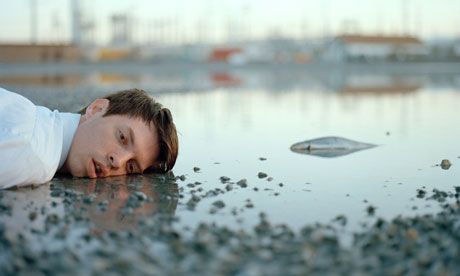
The privatisation of a city's water supplier is not the most obvious topic for a thriller. One of Joan Brady's characters even acknowledges this, telling the great and the good at a dinner party: "I have to admit that I can't think of a more boring subject to have an opinion on." But this is a book from a literary novelist with pedigree – she was the first female winner of the Whitbread book of the year award (in 1993 for Theory of War) – who turned to thriller-writing only in 2005. And she makes it work, just.
The Blue Death is Brady's third thriller, and her third to feature convicted murderer David Marion as central character. Marion is no longer an inmate of South Hams state prison (more of which later); these days, he has married into Springfield, Illinois's social elite, making him both a prickly thorn in the side of the claustrophobic world of the moneyed, and perfectly placed to observe the devastating fallout when the city's mayor, Jimmy Zemanski, hand in glove with evil multinational UCAI, decides to take its water private. "There just isn't," Zemanski tells the gathered citizens, "enough water to go round, and every day there's less of it."
As protests grow, the cloying summer weather suddenly turns to storm and the city is flooded, bringing the water issue sharply to the fore – and spreading an unknown and deadly disease among its now quarantined citizens. But are the rapid, awful deaths the result of accident or something more sinister, and can public utilities really protect our water supplies from the threat of bioterrorism?
There's more, including a dastardly corporate plot to create a "Grand Canal" bringing water from Canada to the US, and the dreadful abuse of the chain gangs that are building it. Where the real thrills and spills of The Blue Death emerge, though, are in Brady's terrifying depictions of a rich city in America's heartland turning oh so quickly to riot, robbery and rape. Marion, too, is a compelling creation.
The novel opens as he commits another murder – "He sank into mud up to his ankles, carried her out into the water until he could feel an undercurrent, held her head under until she stopped breathing, let her go" – and yet this killer is probably the novel's most likable character, standing wry, amused and true to himself among the gossiping rich.
But back to South Hams. Brady has named her horrendous American prison after the Devon council that fought her for eight long years over a shoe factory that, she says, poisoned her in her own home, leaving her with neurotoxicity. The author makes sure, in her acknowledgements, to pay thanks to South Hams district council, "whose relentless attacks gave me practical lessons in how to hate".
This hate must explain the uncompromisingly evil motives of the corporations in her novel, as well as the poisoning pollution that affects Marion on a trip to Gary, Indiana. Business corrupts and big business corrupts absolutely is the message Brady is sharing here, and not particularly subtly. There is none the less much to recommend about this novel: it's an intelligent, refreshingly different take on the thriller, if occasionally a little heavy-handed.

